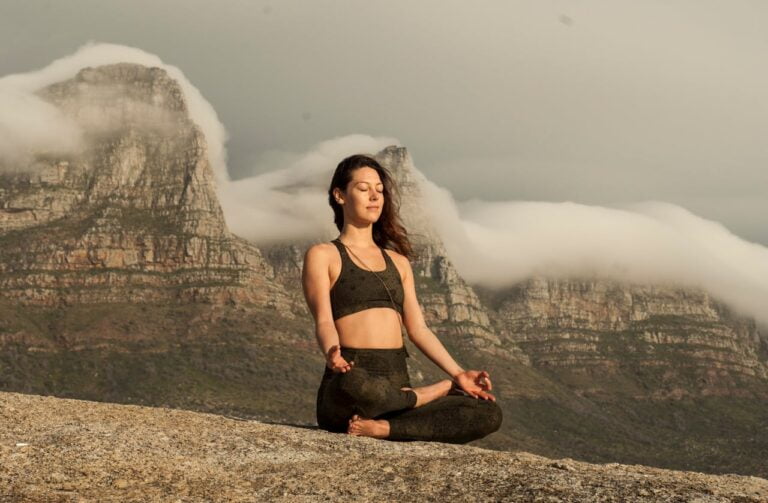Discover the art of integrating mindfulness into your daily routine with walking meditation. Learn how to infuse awareness into everyday activities, finding tranquility in each step.
Introduction
Understanding Walking Meditation
Walking meditation, also known as mindful walking, is a contemplative practice that combines the physical activity of walking with mindfulness techniques. Unlike traditional seated meditation, walking meditation involves moving slowly and intentionally while maintaining body and breath awareness.
Importance of Mindfulness in Today’s Society
Mindfulness has become increasingly relevant in today’s fast-paced world filled with distractions and stressors. Mindfulness, the practice of being present and fully engaged at the moment, offers a powerful antidote to the anxieties and pressures of modern life. Incorporating mindfulness into daily routines, including walking activities, can improve mental clarity, emotional well-being, and overall quality of life. Learn more.
The Basics of Walking Meditation
Definition and Origins
Walking meditation has roots in various spiritual traditions, including Buddhism and Taoism, which are often used to complement seated meditation practices. The exact origins of walking meditation are difficult to pinpoint, but its fundamental principles have been passed down through generations to cultivate mindfulness and inner peace.
Benefits of Practicing Walking Meditation
Physical Health: Walking meditation offers numerous physical benefits, including improved circulation, enhanced flexibility, and reduced muscle tension.
Mental Clarity: By focusing on the present moment and the sensations of walking, practitioners often experience increased mental clarity and concentration.
Emotional Well-being: Regular walking meditation can help reduce stress, anxiety, and depression while promoting calm and emotional resilience.
Accessible to All: Unlike some forms of meditation that require specific postures or conditions, walking meditation can be practiced by people of all ages and physical abilities, making it highly accessible and inclusive.
Getting Started with Walking Meditation
Finding the Right Environment:
Finding the right environment for walking meditation is crucial for creating a conducive atmosphere for mindfulness practice. Ideally, choose a location that is quiet and free from distractions, such as a park, forest trail, or even a quiet neighborhood street. Nature settings can be particularly beneficial, as they offer the opportunity to connect with the natural world and enhance the overall experience of walking meditation. Ensure that the chosen environment is safe and accessible, with smooth and even terrain, to avoid any potential hazards that may disrupt your focus.
Proper Posture and Technique:
Proper posture and technique are essential aspects of walking meditation that contribute to its effectiveness. Begin by standing tall with a straight spine, shoulders relaxed, and arms naturally by your sides. Find a comfortable walking pace that feels natural, both fast and fast enough. As you start walking, maintain a steady and rhythmic pace, focusing on the sensation of each step touching the ground. Pay attention to your posture throughout the practice, ensuring you remain balanced and centered with each movement. You set a solid foundation for deeper immersion into walking meditation by cultivating mindfulness in your posture and technique. Learn more.
Incorporating Mindfulness into Walking
Focusing on Breath and Body Awareness:
One of the fundamental aspects of incorporating mindfulness into walking is to focus on your breath and body awareness. Begin by bringing your attention to the sensation of your breath as you inhale and exhale naturally. Notice the rise and fall of your chest or the expansion and contraction of your abdomen with each breath. As you continue walking, synchronize your breath with your steps, inhaling as you lift one foot and exhaling as you place it back down. Additionally, pay attention to the sensations in your body as you move, such as the feeling of your feet making contact with the ground or the movement of your muscles and joints. By anchoring your awareness in the present moment through breath and body awareness, you cultivate a more profound sense of mindfulness in your walking meditation practice.
Cultivating Presence with Each Step:
Another critical aspect of incorporating mindfulness into walking is cultivating presence with each step. Rather than allowing your mind to wander or become distracted, focus entirely on the act of walking itself. Notice the sensations in your feet as they make contact with the ground, the shifting of your weight from one foot to the other, and the subtle movements of your body with each step. Resist the urge to rush or hurry through your walking meditation practice; instead, embrace each moment with curiosity and openness. By cultivating presence with each step, you deepen your connection to the present moment and enhance the overall effectiveness of your walking meditation practice. Learn more.

Advanced Techniques for Walking Meditation
Deepening the Practice with Visualization
Visualization can be a powerful tool to enhance the experience of walking meditation. As you walk, imagine yourself surrounded by a peaceful and serene environment. Picture yourself walking along a tranquil beach, through a lush forest, or in a serene garden. Visualizing these calming scenes can help quiet the mind and deepen your sense of relaxation and mindfulness during the practice. Additionally, you can visualize positive affirmations or intentions with each step, reinforcing your focus and connection to the present moment.
Exploring Different Walking Patterns
Exploring different walking patterns can add variety and depth to your meditation practice. Instead of walking constantly, try alternating between slower and faster strides, or experiment with walking in different directions—forward, backward, sideways, or in circles. Each variation can offer a unique perspective and challenge, allowing you to explore different sensations and levels of awareness. By varying your walking patterns, you can keep the practice fresh and engaging while honing your ability to stay present and centered in any situation.
Overcoming Challenges in Walking Meditation
Dealing with Distractions and Restlessness
Distractions and restlessness are common challenges that arise during walking meditation. When distractions occur, gently acknowledge them without judgment, and then redirect your focus back to the sensations of walking—the feeling of your feet touching the ground, the rhythm of your breath, or the movement of your body. If restlessness arises, try to observe it with curiosity and compassion rather than resisting or fighting against it. By cultivating a non-judgmental awareness of distractions and restlessness, you can learn to navigate them with greater ease and grace, deepening your mindfulness practice.
Patience and Persistence in Practice
Patience and persistence are essential qualities to cultivate in walking meditation practice. It’s natural for the mind to wander or for challenges to arise. Instead of becoming frustrated or discouraged, approach each practice with patience and an open mind. Understand that progress takes time and that each moment of mindfulness is valuable, regardless of any perceived setbacks. By consistently showing up to the practice with patience and persistence, you can gradually deepen your understanding and experience of walking meditation, reaping its benefits over time.
Integrating Walking Meditation into Daily Life
Incorporating Mindful Walking into Routine Activities: Incorporating walking meditation into your daily routine doesn’t have to be complicated. It’s about infusing mindfulness into activities you already do. Instead of rushing from one task to another, walk with awareness. Whether walking to the bus stop, strolling to the grocery store, or even just pacing in your backyard, each step can be an opportunity for mindfulness. Notice the sensation of your feet touching the ground, the rhythm of your breath, and the sights and sounds around you. By weaving mindful walking into your daily activities, you can bring a sense of calm and presence to even the most mundane tasks.
Finding Balance and Consistency in Practice: Like any form of meditation, consistency is critical to reaping the benefits of walking meditation. However, finding balance in your practice is equally important. Avoid pushing yourself too hard or setting unrealistic expectations. Instead, aim for regular but manageable sessions that fit into your schedule. Whether it’s a short walk during your lunch break or a longer stroll in the evening, prioritize consistency over intensity. And remember, it’s okay to adapt your practice to suit your needs. Some days, you may feel more energetic and focused, while other days, you may need gentler, more restorative walking. Listen to your body and find a rhythm that works for you. Learn more.
Walking Meditation and Mental Well-being
Scientific Evidence on the Psychological Benefits: Walking meditation’s benefits extend far beyond physical health; there’s a wealth of scientific evidence supporting its positive impact on mental well-being. Studies have shown that regular practice can reduce symptoms of anxiety, depression, and stress. By mindful walking, individuals can learn to observe their thoughts and emotions without judgment, fostering greater self-awareness and emotional resilience. Additionally, walking in nature has been found to have particularly potent effects, with participants reporting improved mood and cognitive function compared to urban environments. These findings underscore the powerful connection between mind, body, and environment in promoting mental well-being.
How Walking Meditation Supports Stress Reduction and Emotional Balance: One of the most remarkable aspects of walking meditation is its ability to promote stress reduction and emotional balance. By bringing attention to the present moment and grounding oneself in the sensations of walking, individuals can interrupt the rumination and worry that often accompanies stress. Moreover, the rhythmic nature of walking can induce a state of relaxation, activating the body’s parasympathetic nervous system and counteracting the physiological effects of stress. Over time, consistent practice can cultivate a sense of inner calm and serenity, allowing individuals to navigate life’s challenges with greater resilience and perspective.

Final words
Recap of Key Points: Incorporating walking meditation into your daily life offers a simple yet powerful way to cultivate mindfulness and enhance mental well-being. By integrating mindfulness into routine activities and finding balance in your practice, you can experience the transformative effects of walking meditation firsthand. Scientific research supports its effectiveness in reducing stress, promoting emotional balance, and improving overall mental health.
Encouragement for Continued Exploration and Practice:
As you embark on your journey with walking meditation, remember that it’s a practice, not a destination.
Be patient with yourself, embrace the ups and downs, and stay open to the possibilities that unfold with each step. Whether new to meditation or a seasoned practitioner, there’s always more to discover and learn.
So, keep exploring, practicing, and allowing walking meditation to enrich your life in ways you never thought possible.










